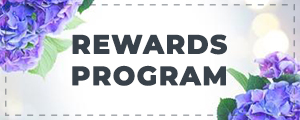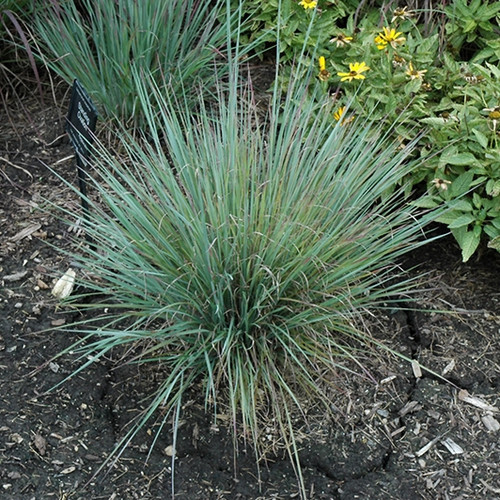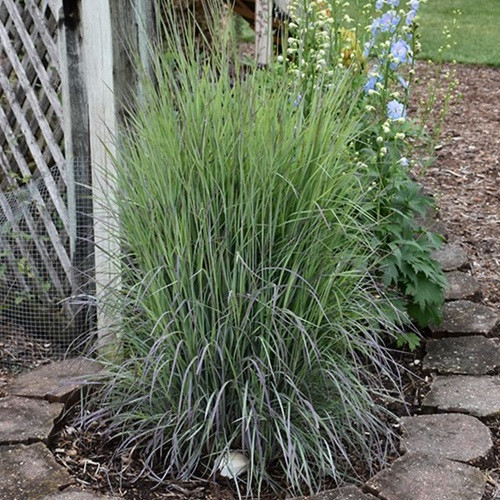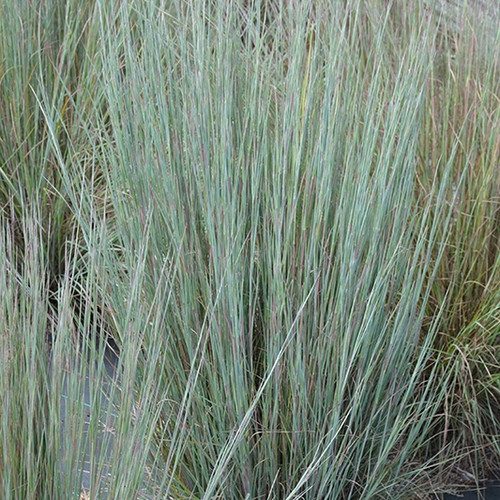| Andropogon gerardii | USDA Zone: 3-9 |
Big Bluestem, a native grass, has been rediscovered as a useful and beautiful landscape plant. Drought tolerant and easy to maintain, it is a natural choice for prairie, meadow and naturalistic plantings.
Big Bluestem, Andropogon gerardii is also great as a background or accent in mixed plantings. Big Bluestem is especially interesting when in bloom - its curiously shaped seed heads resemble upside-down turkey feet. Its foliage draws attention as it changes from green to blue-green and silvery blue in the summer, to red, orange and purple in the fall.
Big Bluestem provides shelter and food for songbirds. It grows well in dry-moist, sandy, clay or shallow soils with low fertility. Big Bluestem prefers full sun.
Native to Ontario
Common Name: Big Bluestem, Ornamental Grass
|
Key Feature
|
Light Needs | Landscape Uses |
 |
 |
|
|
|
|
| More About Big Bluestem Ornamental Grass |
| Height: 5 ft |
Spread: 2 ft |
Flower Colour: Burgundy |
|
Dubbed the "monarch of the prairie", this native grass was once the dominant component of the American tallgrass prairie. It adapts easily to a wide range of soil and moisture conditions as long as full sun is provided. This long-lived grass has a variety of uses including screening, naturalizing, restoring prairies, and nesting materials for birds and mammals. Andropogon is not a fussy grower. It will tolerate just about any soil or moisture level as long as full sun is provided. Lean to average soils are best, as too much fertility will cause the plants to be more open and weak in habit. It is very low maintenance and long lived once established. Warm Season Grasses: These grasses are much slower starting in the spring. They do not push new growth until temperatures warm in early to midsummer. They flower later in the summer or fall with most blooms remaining into the winter. Most warm season grasses tolerate heat, humidity and drought; some even thrive in these conditions. Note that when grown in a container, it may not perform exactly as indicated on the tag - this is to be expected. Also note that when growing plants in outdoor containers and baskets, they may require more frequent waterings than they would in the yard or garden. Be aware that in our climate, most plants cannot be expected to survive the winter if left in containers outdoors, and this plant is no exception. NOTE: Some flowers and plants may be harmful or poisonous to people or pets if touched or ingested. If you require more information before placing an order, please let us know in advance. |









